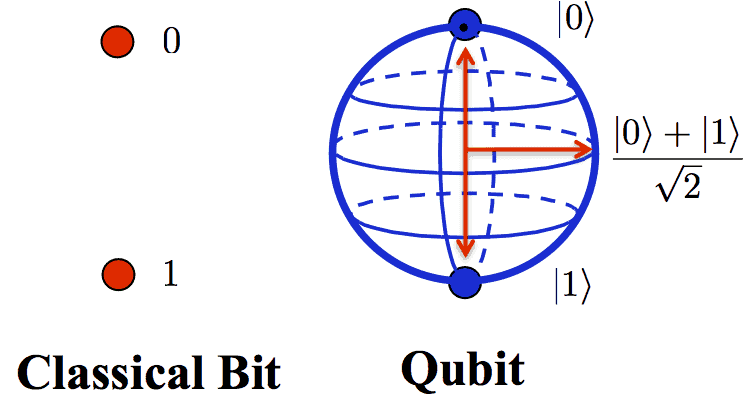Scientists at the University of California, Santa Barbara, and at Google reported on Wednesday in the journal Nature that they are one step closer to developing a true quantum computer – they have developed a quantum device that checks and corrects its own errors.

Quantum computing promises to be a true revolution in terms of processing power, revolutionizing computers as we know them; it would make direct use of quantum-mechanical phenomena, such as superposition and entanglement, to perform operations on data, using qubits (quantum bits). Unlike a bit, which has to have one of two states (one and not the other), a qubit can be in a superposition of both states at the same time, a property which is fundamental to quantum computing. It promises to be something comparable to what silicon microchips were, leading into a new age of computing.
But before we can take advantage of all this power, we first have to solve some issues; among these, one of the more stressful ones is the very nature of the qubits – because they can have either one of two states at the same time, after you store information in them, they can reset, and “forget” the information that was stored on them.
“One of the biggest challenges in quantum computing is that qubits are inherently faulty,” said Julian Kelly, graduate student researcher and co-lead author of a research paper that was published in the journal Nature. “So if you store some information in them, they’ll forget it.”
Qubits can have both states, existing in and at all states simultaneously – they only “choose” a position when you measure them. It’s this very property that makes qubits be able to process more than traditional bits, but it’s also this property that means they can simply remove information after it was stored on them. So in a way, their biggest advantage is also their biggest downside.
“It’s hard to process information if it disappears,” said Kelly.
Scientists have been trying for a long time to develop a machine that’s able to detect and auto-correct these issues – now, researchers from the University of California Santa Barbara working with Google engineers believe they finally did it. Their idea involves a scheme in which several qubits work together to keep the information; if one qubit rebels and resets the information, the others keep it in check. Even by using several qubits to store one piece of information, this is still much more effective than traditional computing.

“And the idea is that we build this system of nine qubits, which can then look for errors,” he said. Qubits in the grid are responsible for safeguarding the information contained in their neighbors, he explained, in a repetitive error detection and correction system that can protect the appropriate information and store it longer than any individual qubit can.
In case you haven’t figured it out already, quantum mechanics is complicated and strange – and it’s about to get even more so. The key here was to keep the qubits in check without actually measuring them – when you measure a quantum state, you actually give it a value… and you can’t do this, because then it’s not a qubit anymore – it’s just a bit.
“You can’t measure a quantum state, and expect it to still be quantum,” explained postdoctoral researcher Rami Barends. The very act of measurement locks the qubit into a single state and it then loses its superpositioning power, he said. Therefore, in something akin to a Sudoku puzzle, the parity values of data qubits in a qubit array are taken by adjacent measurement qubits, which essentially assess the information in the data qubits by measuring around them. “So you pull out just enough information to detect errors, but not enough to peek under the hood and destroy the quantum-ness,” said Kelly.
This is a major step, because renegade qubits have been rendering most quantum computing devices unusable; now, scientists can finally start applying their designs.
“It’s a major milestone,” said Barends. “Because it means that the ideas people have had for decades are actually doable in a real system.”
Journal Reference: J. Kelly et al. State preservation by repetitive error detection in a superconducting quantum circuit. doi:10.1038/nature14270

